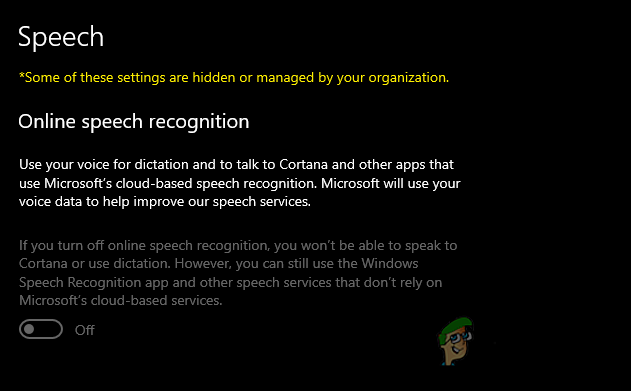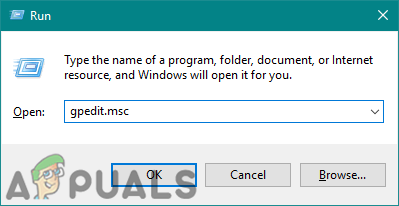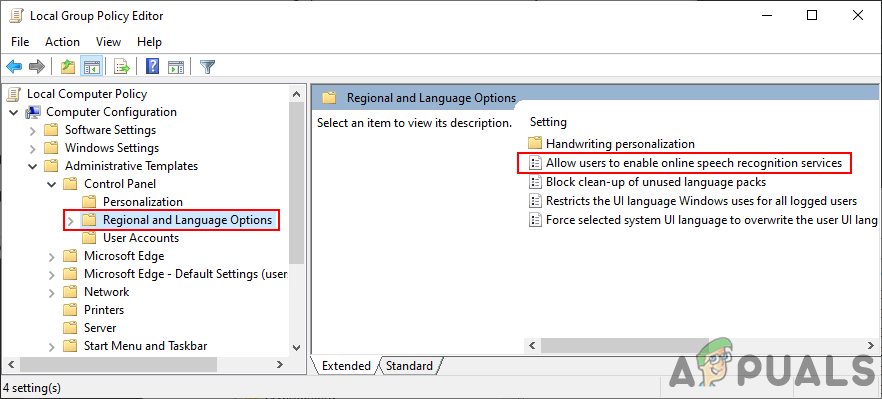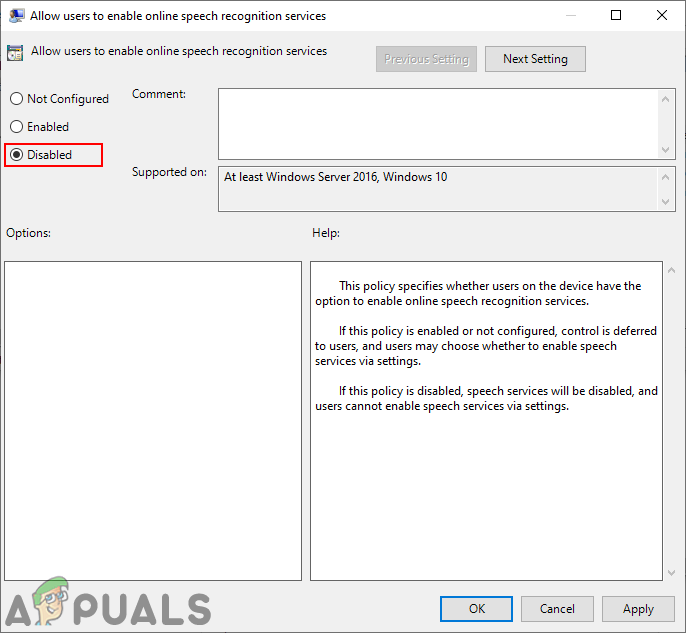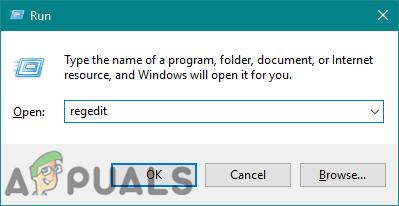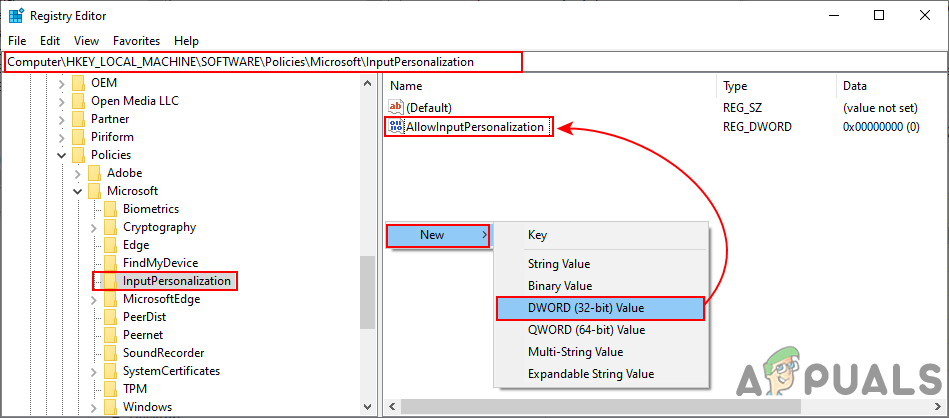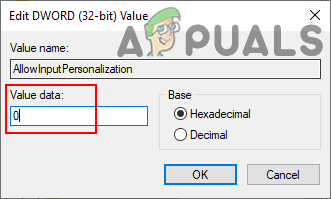By default, the setting for the Online Speech Recognition is enabled on Windows 10. Users can go to the Settings app and turn ON the Online Speech Recognition anytime they want. However, administrators can disable the Online Speech Recognition from other users. This will grey out the Online Speech Recognition setting in the Settings app. Standard users will be unable to turn ON the Online Speech Recognition. We will provide the steps for disabling, however, at the end of each method, we also added the enabling step.
Method 1: Using the Local Group Policy Editor
The Group Policy is a Windows feature that can be used to configure many different types of settings for the operating systems. These settings are used to define what a system will look like and how it will behave. In this method, we are using a specific setting that will grey out the Online Speech Recognition setting. By default, the setting is enabled and users can turn it ON or turn it OFF accordingly. However, by using this policy setting, an administrator can disable access to the Online Speech Recognition setting for other users. Follow the below steps to configure this setting: Note: If you are using the Windows 10 Home version, then kindly skip this method. That is because the Group Policy Editor isn’t available for the Windows 10 Home users.
Method 2: Using the Registry Editor
The Registry Editor is another tool that can be used to configure the settings for an operating system. This is an alternative method for disabling the Online Speech Recognition setting. This is also the only available method for Windows 10 Home users. It will require some additional steps of creating the missing key/value in the Registry. Make sure to follow each step carefully:
How to Enable / Disable Online Speech Recognition in Windows 10?Fix: “Speech Recognition Setup Doesn’t Work” Error on WindowsHow to Disable Face Recognition or Fingerprint Login on Windows 10?How to Fix Facial Recognition Not Available on Windows Hello?
